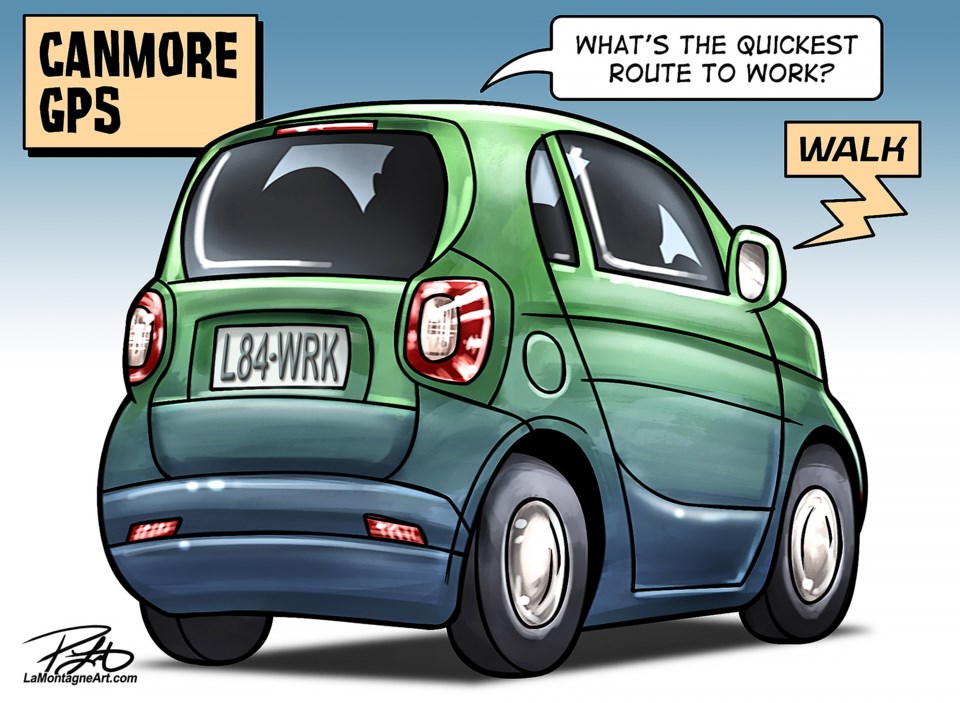A key aspect of any local government's role is to provide the safest community for its residents.
Across the country, municipalities are lowering speed limits across the board – particularly on residential and collector roads – as evidence and research has borne out the impact it has in increasing safety.
After Banff lowered its town-wide speed limit in 2022 to 30 kilometres an hour, Canmore will soon be following through on a lower speed limit for most of its roads this year. Canmore joins a growing movement of nearby municipalities in Airdrie and Cochrane with lower speeds for their residential roads, with larger cities such as Toronto and Vancouver having the same speed for residential and collector roads.
While wanting to race from Point A to B quickly is enticing, the inherent danger doesn’t negate the necessity of providing a safe community for residents.
And while some will bemoan the changes, the reality is going from one end of the community to the next in 60 seconds or less like a Fast and Furious movie isn’t exactly realistic.
With both Banff and Canmore being tourism hubs, the likelihood of being able to drive well above the speed limit at the best of times is unrealistic as people flock to the mountains.
Statistics from Transport Canada show the staggering decline in deaths and injuries involving vehicles since 2001. In that year, there were 2,415 fatal collisions leading to 2,758 deaths with more than 215,000 injuries, 150,000 personal injuries and 15,000 serious injuries being recorded.
In 2020, the last published year of statistics from Transport Canada, there were 1,591 fatal collisions that resulted in 1,745 deaths, 100,000 injuries, 70 personal injuries and just under 8,000 serious injuries. Though still high, it shows that despite a growing population, and more drivers and vehicles on the road, that safety mitigation is helping increase safety.
According to the World Health Organization, a person getting hit by a vehicle at 30km/h has a 90 per cent chance of living compared to less than 10 per cent for a car moving at 80km/h.
The social cost, according to Transport Canada, was $35.97 billion because of deaths, injuries, property damage and traffic delays.
Communities are consistently introducing safety traffic initiatives each year with little to no fanfare.
Banff and Canmore have also taken it a step further in providing people with almost free local transit – free for Banff residents in the townsite and entirely free in Canmore’s municipal borders – to provide another option for people to commute.
However, remaining safe behind the wheel is almost always up to the driver.
Photo radar statistics, for as much disdain some have for it, show drivers are continuing to speed and ignore local traffic rules. Albeit only about two per cent of vehicles scanned by photo radar in Canmore were ticketed, there were still more than 7,000 tickets handed out in 2022.
As local roads become safer through policy changes and infrastructure improvements such as the upcoming work on Railway Avenue in Canmore, the greater hanging fruit remains the Trans-Canada Highway and Highway 1A.
The province has slowly worked on it through several initiatives such as setting aside more than $50 million in the budget to improve fencing along Highway 1A. The wildlife overpass on the Trans-Canada Highway with associated fencing is scheduled to be finished later this year.
Alberta Transportation decreased a three-kilometre section of the Trans-Canada Highway between Calgary and Chestermere on the Stoney Trail interchange in 2022 after Rocky View County asked the province to help in addressing safety concerns.
While not the same, especially not due to the millions of drivers who pass through the Bow Valley on the Trans-Canada Highway, the lowering of speeds between Lac des Arcs and Banff National Park to have a more unison law for drivers to follow would remain among the easier options to help safety.
The inevitable frustrations by some drivers are likely to be voiced in feeling the war on vehicles is ramping up once again.
But with the safety of people and wildlife rightfully taking precedence, having drivers leave an extra minute or two earlier is an easy sacrifice to make.




